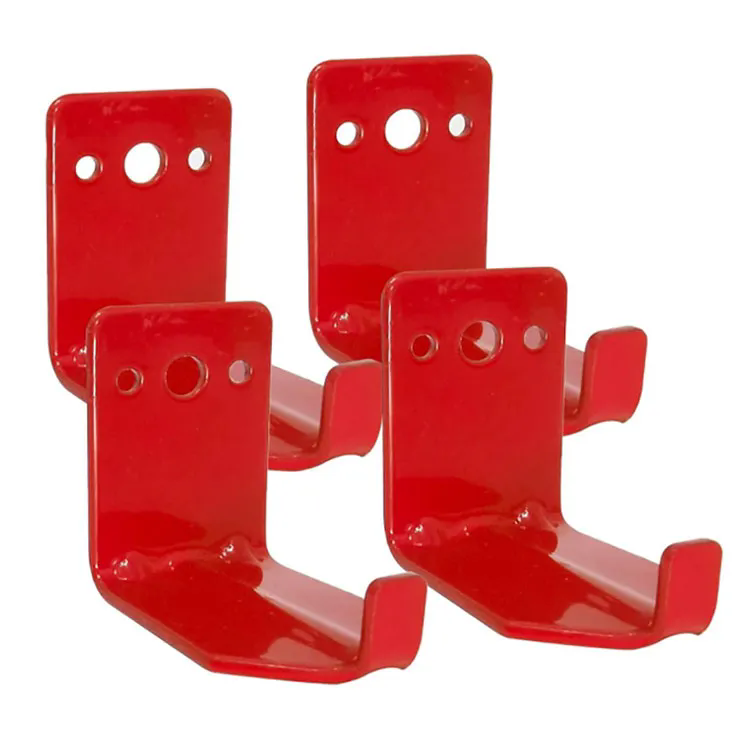Why Should You Consider Using Metal Brackets in Your Projects?
2024-12-03
When it comes to construction, engineering, or even everyday household tasks, the importance of durable and reliable components cannot be overstated. One such component that plays a critical role in providing support and stability is the metal bracket. But the real question is: Why should you consider using metal brackets in your projects?
What Are Metal Brackets?
Metal brackets are L-shaped or angular support structures made from various types of metal, commonly steel, aluminum, or stainless steel. These brackets are designed to hold or connect different materials together, providing support or reinforcement where necessary. They are widely used in construction, furniture assembly, automotive design, and more. From supporting shelves to stabilizing large machinery, metal brackets serve a variety of purposes, offering both practical and structural solutions.
The Benefits of Using Metal Brackets
1. Strength and Durability
One of the main reasons to use metal brackets is their exceptional strength and durability. Metals such as steel and stainless steel provide excellent load-bearing capacity, ensuring that the bracket can withstand heavy loads without bending or breaking. This makes metal brackets ideal for supporting structures or items that require high levels of stability, such as shelving units, machinery, and even architectural elements.
2. Versatility Across Applications
Metal brackets come in a wide range of shapes, sizes, and designs, making them versatile and adaptable for different applications. Whether you need small brackets for securing furniture or large, industrial-sized ones for construction, there's a metal bracket that fits the bill. This adaptability allows them to be used across various industries, including construction, automotive, home improvement, and even DIY projects.
3. Corrosion Resistance
Depending on the material used, many metal brackets are highly resistant to corrosion, particularly those made from stainless steel or galvanized steel. This is an essential factor when brackets are exposed to the elements or used in high-humidity areas, such as bathrooms, kitchens, or outdoor environments. Corrosion-resistant metal brackets ensure long-lasting performance and reduce the need for frequent replacements or repairs.
4. Ease of Installation
Installing metal brackets is typically a straightforward process. Most metal brackets are designed to be compatible with standard fasteners like screws or bolts, making them easy to install in a variety of materials, including wood, concrete, or metal itself. Their simple design and ease of use make them a go-to choice for builders, contractors, and even DIY enthusiasts who want reliable support without complicated installation processes.
5. Cost-Effective Solution
When compared to other support systems or reinforcements, metal brackets can be a cost-effective solution. They are relatively inexpensive to manufacture and purchase, especially for smaller-scale applications. Their strength, combined with low upfront costs and minimal maintenance, makes them a popular choice in both commercial and residential projects.
Common Uses of Metal Brackets
1. Furniture and Shelving
One of the most common uses for metal brackets is in the construction of furniture, especially when it comes to supporting shelves. Brackets are used to hold the shelves securely in place, preventing them from collapsing under weight. They are available in various designs to complement the aesthetic of the furniture, from simple functional brackets to decorative ones.
2. Structural Reinforcement in Buildings
In construction, metal brackets are used extensively for reinforcing structures, such as walls, beams, and columns. They are used to connect different elements of a building, providing additional support to ensure structural integrity. Metal brackets are particularly useful in seismic zones, where additional reinforcement is often required.
3. Automotive Applications
In the automotive industry, metal brackets are used to secure various components within vehicles, from holding engine parts in place to mounting lights, mirrors, and other accessories. Their durability is crucial in ensuring the safety and longevity of automotive parts.
4. Outdoor and Garden Applications
Metal brackets are often used in outdoor settings to provide support for structures like fences, decks, and garden furniture. Because of their resistance to the elements, they are perfect for applications where exposure to rain, wind, or sun is inevitable.
5. Industrial and Machinery Support
In industrial settings, metal brackets play a critical role in supporting and stabilizing machinery. Whether it's used in assembly lines, heavy equipment, or processing machines, these brackets ensure that machinery operates smoothly and stays in position during use.
How to Choose the Right Metal Bracket
When choosing a metal bracket for your project, several factors should be considered to ensure you pick the right one for the job:
- Material: Consider the environment the bracket will be used in. For indoor, dry environments, standard steel brackets might suffice, but for outdoor use or areas exposed to moisture, stainless steel or galvanized metal brackets are ideal.
- Load Capacity: Ensure the bracket can handle the weight or load it will be supporting. The size and design of the bracket are essential in determining its strength and how much weight it can bear.
- Design and Aesthetics: If the bracket is visible, its design may be an important consideration. Choose a style that blends with the overall design of your project.
- Installation Method: Consider how the bracket will be installed. Some brackets may require welding, while others can be easily attached with screws or bolts.
Are Metal Brackets Worth the Investment?
For any project that requires structural support or reinforcement, metal brackets are an invaluable tool. Their strength, versatility, and durability make them a go-to solution across multiple industries. Whether you're building a new structure, assembling furniture, or fixing machinery, the right metal bracket can provide the stability and reliability you need to ensure your project is a success.
While the initial cost may vary depending on the size and material of the bracket, the long-term benefits of using metal brackets—such as reduced maintenance, enhanced safety, and improved functionality—make them well worth the investment. If you're working on a project that demands long-lasting support, metal brackets are definitely worth considering.



